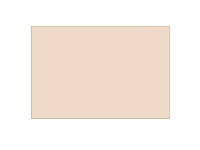|
Outline
This method replaces damaged surface mount pads with new adhesive-backed dry film pads. The new pads are bonded to the circuit board surface using a bonding iron.
|
||||||||||||||||||||||||||||||||||||||||||||||
|
Procedure
Procedure
Evaluation
|
||||||||||||||||||||||||||||||||||||||||||||||
Images and Figures
Surface Mount Pad Repair, Film Adhesive Method, Butt Joint Method

Figure 1. Remove the defective pad and remove soldermask from the connecting circuit.

Figure 2. Select a replacement pad that matches the missing pad

Figure 3. Place the new pad in position using high-temperature tape.

Figure 4. Place a Circuit Track in poisition for soldering.

Figure 5. Completed repair.
|
||||||||||||||||||||||||||||||||||||||||||||||
4.7.6 Surface Mount Pad Repair, Film Adhesive Method, Butt Joint Method
Procedure covers method to repair damaged surface mount pads on circuit board assemblies using dry film adhesive.
Minimum Skill Level: Advanced
Conformance Level: High
REQUEST FOR QUOTE GUIDES INDEX

Surface Mount Pad Repair, Film Adhesive Method, Butt Joint Method

Remove the defective pad and remove soldermask from the connecting circuit.

Select a replacement pad that matches the missing pad

Place the new pad in position using high-temperature tape.

Place a Circuit Track in poisition for soldering.

Completed repair.

Circuit Frames have a dry-film adhesive backing to ensure the delicate repair procedure is easy, fast, and highly reliable
LEARN MORE

You'll appreciate the accuracy of this precision machine when repairing conductors, lands, and surface mount pads.
LEARN MORE

We're here to help with all your challenging circuit board and electronic component rework and repair needs.
LEARN MORE
SLIDESHOW STARTING
❮
❯
























